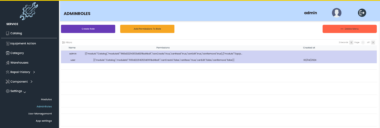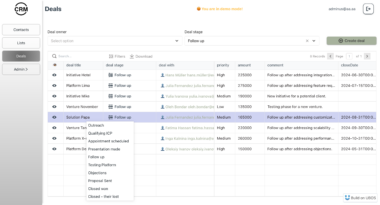LinkedIn MCP Server for Netlify
This is a comprehensive Model Context Protocol (MCP) server that provides complete LinkedIn integration for AI assistants. The server enables AI tools to interact with LinkedIn APIs for profile management, content creation, networking, messaging, and analytics.
This project includes both a serverless MCP server deployed on Netlify and a specialized FastAPI client for easy development and testing.
Features
LinkedIn MCP Server
- Profile Management: Get user profiles and company information
- Content Creation: Create and manage LinkedIn posts
- Network Management: Manage connections and send connection requests
- Messaging: Send and retrieve LinkedIn messages
- Company Intelligence: Search and analyze companies
- Analytics: Network analysis and insights
- Comprehensive Documentation: Built-in API guides and best practices
FastAPI Client
- Specialized LinkedIn API endpoints with intuitive REST interface
- Interactive API documentation (Swagger UI) at
/docs - Comprehensive testing suite with automated validation
- Development tools for local testing and debugging
- Professional error handling and authentication management
Getting Started
Quick Start
Clone and setup:
git clone <repository-url> cd llm_linkedin_mcp_deployment npm installStart LinkedIn MCP infrastructure:
cd mcp-client ./start_linkedin.shThis starts both:
- LinkedIn MCP server at
http://localhost:8888/mcp - FastAPI client at
http://localhost:8002
- LinkedIn MCP server at
Test the setup:
python demo.py --quickGet LinkedIn access token (for full functionality):
python oauth_helper.py
What You Get
After running the quick start, you’ll have:
LinkedIn MCP Server: Complete LinkedIn integration via MCP protocol
FastAPI Client: REST API with Swagger docs at
/docs10 LinkedIn Tools: Profile, posts, companies, connections, messaging, analytics
Documentation: Built-in guides and API references
Testing Suite: Comprehensive validation and testing tools
Testing Your MCP Server
You can test your MCP server using either the MCP Inspector or directly with curl commands.
Using MCP Inspector
While the development server is running, you can test your MCP server using the MCP inspector:
npx @modelcontextprotocol/inspector npx mcp-remote@next http://localhost:8888/mcp
After deployment, you can test your deployed version:
npx @modelcontextprotocol/inspector npx mcp-remote@next https://your-site-name.netlify.app/mcp
Then open http://localhost:6274/ in your browser to interact with the MCP inspector.
Using curl
You can also test the MCP server directly using curl commands:
Initialize the MCP server:
curl -X POST http://localhost:8888/mcp -H "Content-Type: application/json" -d '{"jsonrpc":"2.0","method":"mcp/init","params":{},"id":"1"}'List available tools:
curl -X POST http://localhost:8888/mcp -H "Content-Type: application/json" -d '{"jsonrpc":"2.0","method":"mcp/listTools","params":{},"id":"2"}'Call a tool:
curl -X POST http://localhost:8888/mcp -H "Content-Type: application/json" -d '{"jsonrpc":"2.0","method":"mcp/callTool","params":{"name":"run-analysis-report","args":{"days":5}},"id":"3"}'List available resources:
curl -X POST http://localhost:8888/mcp -H "Content-Type: application/json" -d '{"jsonrpc":"2.0","method":"mcp/listResources","params":{},"id":"4"}'Read a resource:
curl -X POST http://localhost:8888/mcp -H "Content-Type: application/json" -d '{"jsonrpc":"2.0","method":"mcp/readResource","params":{"uri":"docs://interpreting-reports"},"id":"5"}'
Deployment
Deploying to Netlify
- Push this repository to GitHub
- Connect your repository to Netlify
- Configure the build settings:
- Build command: leave empty (no build required)
- Publish directory:
public
After deployment, your MCP server will be available at https://your-site-name.netlify.app/mcp
Using with Claude Desktop
To use this MCP server with Claude Desktop:
- Go to Claude Desktop settings
- Enable the MCP Server configuration
- Edit the configuration file:
{ "mcpServers": { "my-mcp": { "command": "npx", "args": [ "mcp-remote@next", "https://your-site-name.netlify.app/mcp" ] } } } - Restart Claude Desktop
Using the MCP Client
The MCP client provides a REST API interface for interacting with the MCP server. It’s built with FastAPI and offers a clean, modern API with automatic documentation.
Starting the Client
cd mcp-client
pip install -r requirements.txt
uvicorn main:app --reload
This will start the FastAPI server at http://localhost:8001. You can access the API documentation at http://localhost:8001/docs.
Managing the MCP Server and FastAPI Client
The template includes several scripts to manage both the MCP server and FastAPI client:
cd mcp-client
./start.sh # Start both services in the background
./stop.sh # Stop both services gracefully
./check_status.sh # Check if services are running and view logs
./test_client.py # Test the FastAPI client endpoints
These scripts ensure processes keep running in the background even after you close your terminal, properly manage log files, and provide clear status information.
Testing the Client
You can test the client using the provided test script:
cd mcp-client
./test_client.py
This will run a series of tests against the API endpoints and display the results.
API Endpoints
GET /server- Get server informationGET /tools- List available toolsPOST /tools/call- Call a toolGET /resources- List available resourcesPOST /resources/read- Read a resource
For more details, refer to the MCP Client README.
Extending
Extending the MCP Server
You can extend this MCP server by adding more tools and resources to the getServer function in netlify/functions/mcp-server.js. Follow the existing examples and refer to the Model Context Protocol documentation for more information.
Extending the MCP Client
To add new endpoints to the MCP client, edit the main.py file in the mcp-client directory. The client is built with FastAPI, which makes it easy to add new routes and functionality.
Learn More
- Model Context Protocol Documentation
- Netlify Functions Documentation
- Claude Desktop Documentation
- FastAPI Documentation
LinkedIn Integration Server
Project Details
- baptitse-jn/linkedin_mcp
- Last Updated: 6/2/2025
Recomended MCP Servers

A programming framework for agentic AI 
Moneybird MCP Server - AI-powered bookkeeping

MCP server that enables communication and coordination between different Roo modes/roles across multiple systems


An MCP server for retrieving papers from arXiv based on keywords
This is an MCP server that interacts with a PocketBase instance. It allows you to fetch, list, create,...
This read-only MCP Server allows you to connect to Sybase IQ data from Claude Desktop through CData JDBC...
Twist MCP server

SearxNG MCP Server provides privacy-focused web search for AI assistants using SearxNG and the Model Context Protocol.
 From vibe coding to vibe deployment. UBOS MCP turns ideas into infra with one message.
From vibe coding to vibe deployment. UBOS MCP turns ideas into infra with one message.





